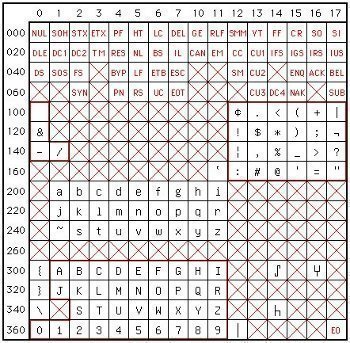EBCDIC (Extended Binary Coded Decimal Interchange Code)
The EBCDIC (Extended Binary Coded Decimal Interchange Code) is an extended binary code for IBM mainframes, mid-range computers, and peripheral devices that use 8 bits instead of the original 6-bit format. Although EBCDIC is still used today, more modern encoding forms, such as ASCII and Unicode, exist. While all IBM computers use EBCDIC as their default encoding format, most IBM devices also include support for modern formats, allowing them to take advantage of newer features that EBCDIC does not provide.
How EBCDIC Works
EBCDIC consists of an 8-bit character format that describes how the computer interprets commands. For example, while one bit may control which language the command is in, another bit may control whether a character is interpreted as uppercase or lowercase. While EBCDIC contains basic functions for supporting actual computer properties and has mild support for newer languages, it does not support many features that Unicode and ASCII provide, such as the ability to write in multiple languages.
Applications
EBCDIC is exclusively used on IBM machines such as mainframes, midrange personal computers, and peripheral devices. Since most IBM machines include extensive processing capabilities and some support for modern encoding languages, they are able to keep up and even outperform devices from other brands. However, most machines and operating systems depend on ASCII and Unicode as their default encoding format.
Advantages and Disadvantages
EBCDIC is advantageous because it consists of an 8-bit character language rather than the old 6-bit character language found on punch card encoding systems. This allows EBCDIC to provide IBM machines with support for a wide variety of functions that punch card encoding systems did not provide. However, EBCDIC only allows machines to process English and one other language and writes characters from left to right in every language, rather than from right to left as seen in Arabic languages.


Comments - No Responses to “EBCDIC (Extended Binary Coded Decimal Interchange Code)”
Sorry but comments are closed at this time.